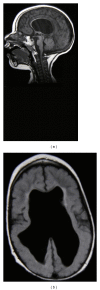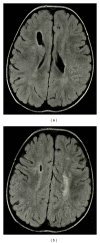Familial recurrence of cerebral palsy with multiple risk factors
- PMID: 22606510
- PMCID: PMC3350070
- DOI: 10.1155/2011/307857
Familial recurrence of cerebral palsy with multiple risk factors
Abstract
The recurrence of cerebral palsy in the same family is uncommon. We, however, report on two families with two or more affected siblings. In both families, numerous potential risk factors were identified including environmental, obstetric, and possible maternal effects. We hypothesize that multiple risk factors may lead to the increased risk of recurrence of cerebral palsy in families. Intrinsic and maternal risk factors should be investigated in all cases of cerebral palsy to properly counsel families on the risk of recurrence. Recent studies of genetic polymorphisms associated with cerebral palsy are considered with reference to our observations in these two families.
Figures


References
-
- Nelson KB. Causative factors in cerebral palsy. Clinical Obstetrics and Gynecology. 2008;51(4):749–762. - PubMed
-
- Winter S, Autry A, Boyle C, Yeargin-Allsopp M. Trends in the prevalence of cerebral palsy in a population-based study. Pediatrics. 2002;110(6 I):1220–1225. - PubMed
-
- Mukherjee A, Varma SK, Kucheria K, Bole SV. Familial cerebral palsy. Journal of the Indian Medical Association. 1973;60(8):300–301. - PubMed
-
- Cooper W. Familial incidence of cerebral palsy. Developmental Medicine and Child Neurology. 1968;10(2):p. 250. - PubMed
Publication types
LinkOut - more resources
Full Text Sources

